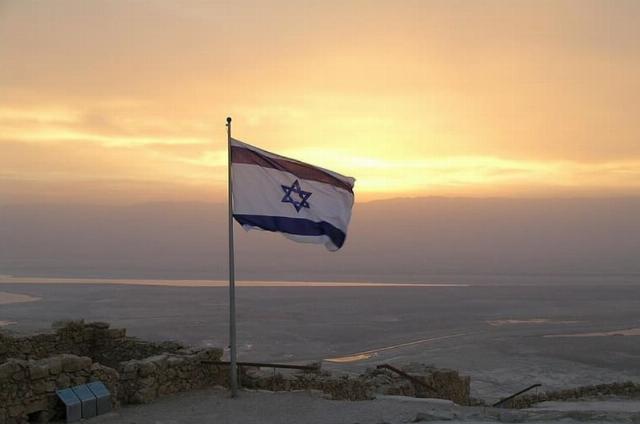Israel must prepare for an era of wars
The Jewish state’s disastrous failures of October 7, 2023 must compel Israeli decision-makers to reevaluate their country’s strategic conceptions. The complacent attitude that both the Israeli government and the top military echelon held must be abandoned.
The belief that Hamas was deterred, and is incapable of launching a major attack, proved fatal. Nearly 3,000 Hamas terrorists invaded Israeli territory and murdered 1,200 Israeli civilians and soldiers while holding the ground in the entire area surrounding the Gaza Strip for hours until Israeli troops finally arrived.
In the years prior to October 7, the talk in the Israeli defense establishment was about a “smaller and a smarter” army. The idea was that the era of conventional wars between large armies, such as the 1973 Yom Kippur War, is over. There was also the natural tendency to consider a reduction in the defense budget. The advocates of a smaller and smarter professional army wanted to exchange manpower costs with sophisticated weaponry. Well, sophisticated electronics and other gadgetry on the Gaza fence/wall didn’t prevent Hamas from crushing the fence and overpowering the civilians in Israeli communities. What was lacking was military manpower.
The recent war in Gaza, and the potential for a multi-front war with Hezb’allah in the north, Iranian proxies in Syria, Iraqi militias (mostly Shiite), Iranian Islamic Revolutionary Guards Corps (IRGC) commanders in the northeast, and Hamas elements in the West Bank (Judea and Samaria), as well as ballistic missiles, suicide drones, and cruise missiles coming directly from Iran, supplemented by the Yemen-based Shiite Houthis (another proxy of Iran), equipped with Iranian missiles that can reach Israel’s southernmost city of Eilat, makes the notion of a small army impossible and suicidal.
In fact, the Israel Defense Forces (IDF) is short of manpower, and the Knesset (the Israeli Parliament) is debating the mobilization of haredi youth to ease the burden of Israel’s reservists. But political considerations seem to be trumping critical security and defense needs. The haredi coalition partners in the current government are opposed to the drafting of Yeshiva-studying young men.
A 2013 report by the Begin-Sadat Center for Strategic Affairs, written by Avi Kobler, a professor and former Defense Ministry analyst, warned against the envisioned plan of a “smaller and smarter” army that would reduce ground forces while relying heavily on air power. Kobler’s report pointed out that a smaller military comes with a price, as “even the low-intensity conflict for which the IDF has been preparing requires a large number of troops to enable the army to succeed.” Kobler continued, “In asymmetrical conflict it is difficult, and sometimes impossible, to rely on a small number of troops using high-tech equipment to destroy a sophisticated guerrilla force, capture the terrain from which guerrilla warfare is conducted, achieve decisive victory on the battlefield, or destroy rocket launchers used by insurgents against populated areas. Even the staunchest advocates of a small and smart militaries would admit that sometimes a massive traditional army may be needed even in low-intensity conflicts.” Kobler recognized in 2013 what the IDF is now realizing.
Hamas (Sunni Muslim) and Hezb’allah (Shiite Muslim), both proxies of the Islamic Republic of Iran, are now fighting more like armies. These Islamic terror groups emerged in the 1980s and initially carried out individual terror attacks, such as car bombings and suicide attacks. In recent years, they have evolved into forces that resemble traditional armies, with battalions and even brigades. Both terror groups have thousands of trained fighters and large stockpiles of missiles. Hezb’allah is alleged to have over 150,000 Iranian-supplied missiles, some with sophisticated guidance systems and fairly good accuracy. The continued supply of such lethal weapons has allowed Hamas, for instance, to wage a sustained battle in the face of a major Israeli campaign.
After Israel withdrew from Gaza in 2005, Hamas underwent a strategic change. From small terror cells, Hamas developed into a real army. It became an organization, with its personnel wearing uniforms and whose daily pursuit was the military. They were trained according to an army doctrine, which included weapons training (involving Iranian trainers), and developed good military skills. In addition to its military training, Hamas operatives received religious indoctrination to strengthen their faith and adherence to the jihadist cause. Hence, Hamas, in effect, created the first Palestinian army.
Hezb’allah is an even greater challenge to Israel than Hamas, albeit constrained by being part of the Lebanese confessional division of power, and its current primacy in Lebanon is likely to be jeopardized by a full-scale war with Israel. Nonetheless, as the 2006 war between Israel and Hezb’allah proved, Israel’s manpower shortage in the 34-day war stemmed from the failure to develop IDF reserve units. The IDF command eliminated reserve units and reduced reserve mobilization.
Currently, in Israel’s war in Gaza, the IDF was compelled to release several brigades not only for R&R, but also because of the economic pressure on the country, and upon the reservists whom the IDF is dependent on in a critical way. When and if the IDF moves into Rafah, it will need a much larger force than the single brigade operating at this time in Gaza.
In the current climate, a full-scale war between Israel and Iran might occur. That would mean having to deal with Hezb’allah and the Shiite militias in Syria, as well as IRGC troops. Such a war would involve large formations and a huge demand for manpower. Israel must therefore prepare for an era of wars, and it must discard the conception of an end to the large-formation wars.

Image via Pxfuel.
Read More: Israel must prepare for an era of wars

